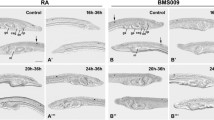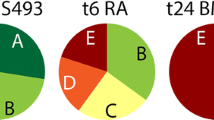Abstract
In vertebrates, excess all-trans retinoic acid (RA) applied during axis formation leads to the apparent truncation of anterior structures. In this study we sought to determine the type of defects caused by ectopic RA on the development of the ascidian Herdmania curvata. We demonstrate that H. curvata embryos cultured in the presence of RA develop into larvae whose trunks are shortened and superficially resemble those of early metamorphosing postlarvae. Despite RA-treated larvae lacking papillar structures they respond normally to natural cues that induce metamorphosis, indicating that chemosensory functionality previously mapped to the most anterior region of normal larvae is unaffected by RA. Excess RA applied during postlarval development leads to a graded loss of the juvenile pharynx, apparently by respecifying anterior endoderm to a more posterior fate. This structure is considered homologous to the gill slits of amphioxus, which are also lost upon RA treatment. This suggests that RA may have had a role in the development of the pharynx of the ancestral chordate and that this function has been maintained in ascidians and cephalochordates and lost in vertebrates.
Similar content being viewed by others
Author information
Authors and Affiliations
Additional information
Received: 27 February 1998 / Accepted: 20 April 1998
Rights and permissions
About this article
Cite this article
Hinman, V., Degnan, B. Retinoic acid disrupts anterior ectodermal and endodermal development in ascidian larvae and postlarvae. Dev Gene Evol 208, 336–345 (1998). https://doi.org/10.1007/s004270050189
Issue Date:
DOI: https://doi.org/10.1007/s004270050189




